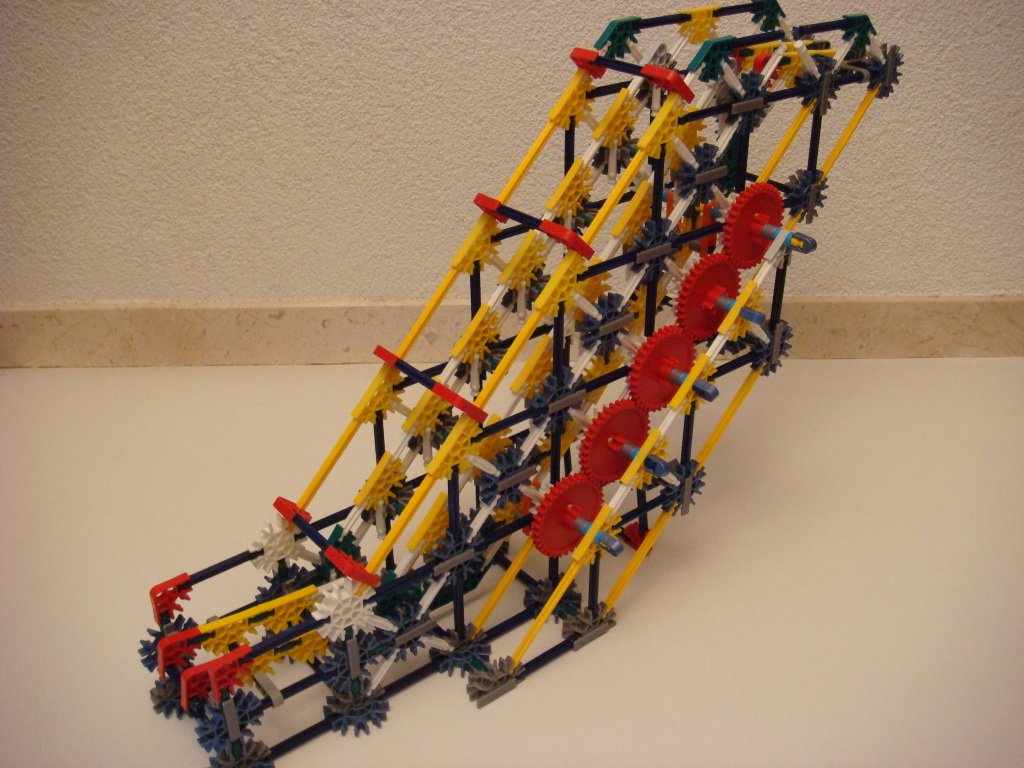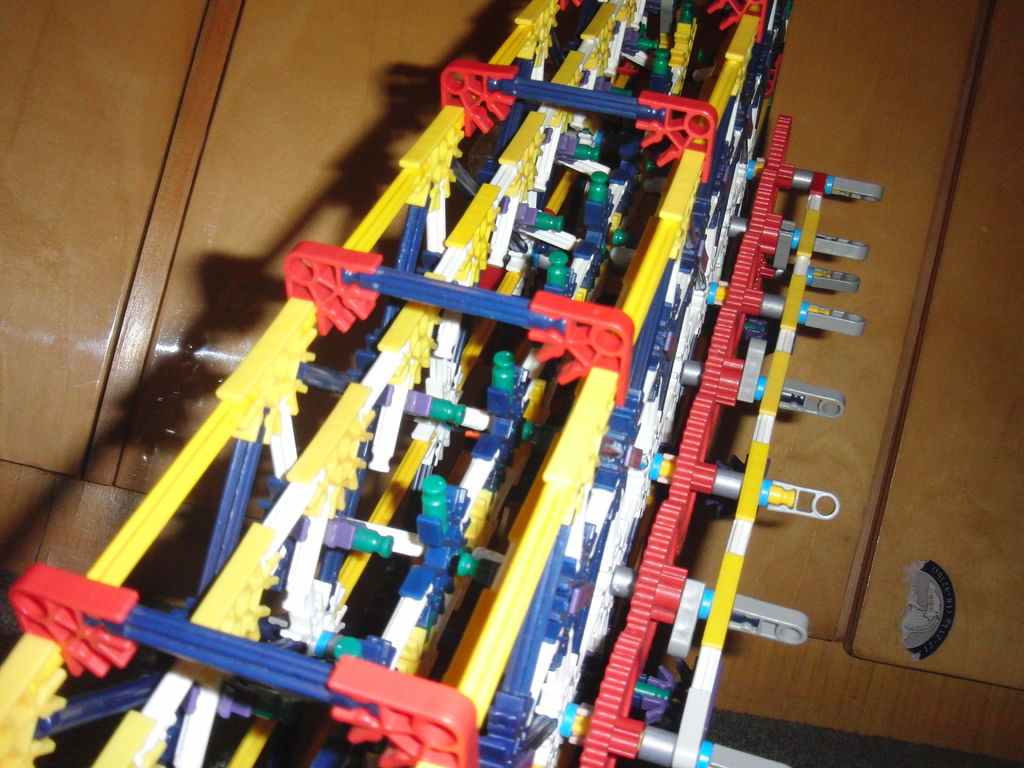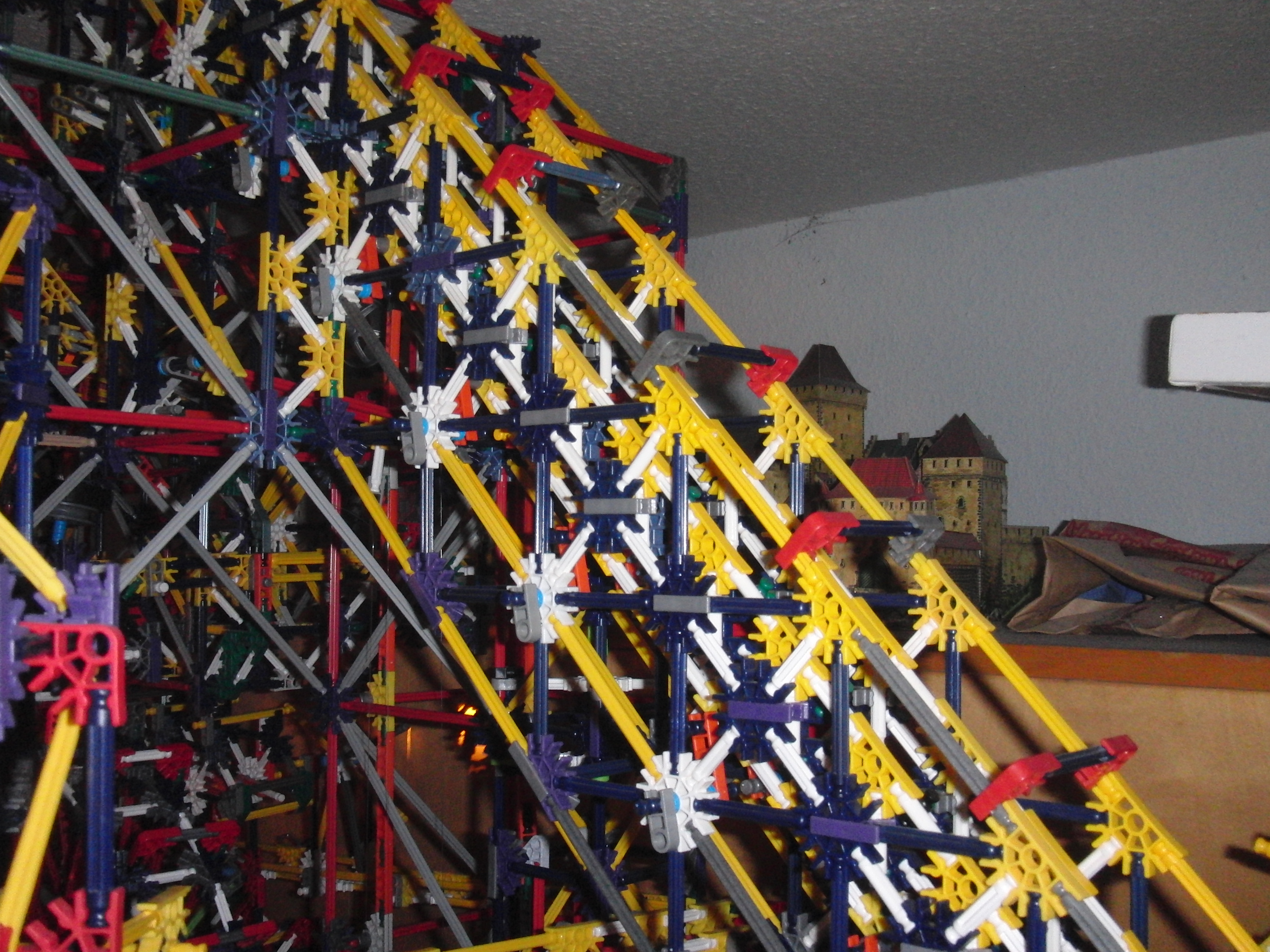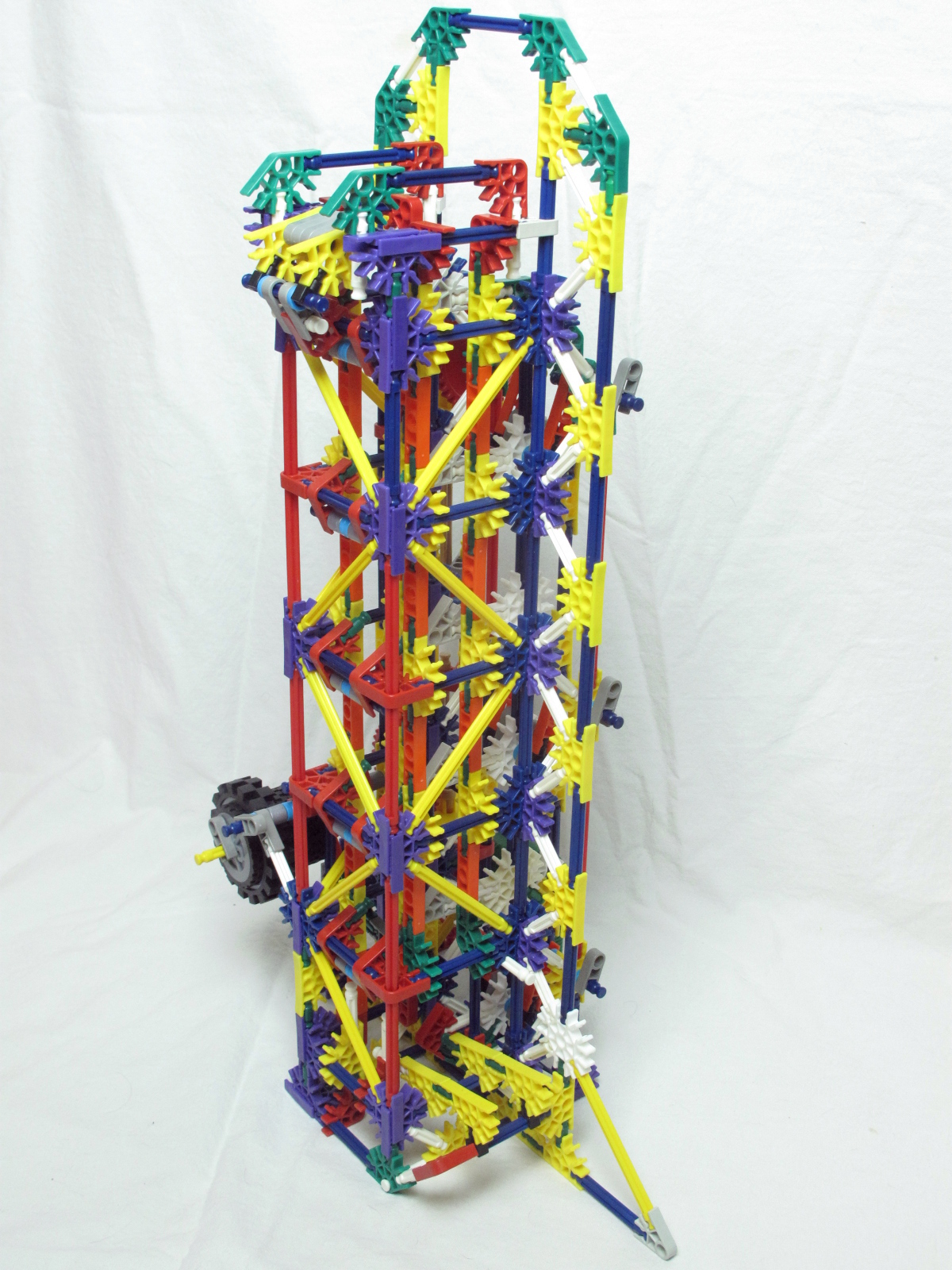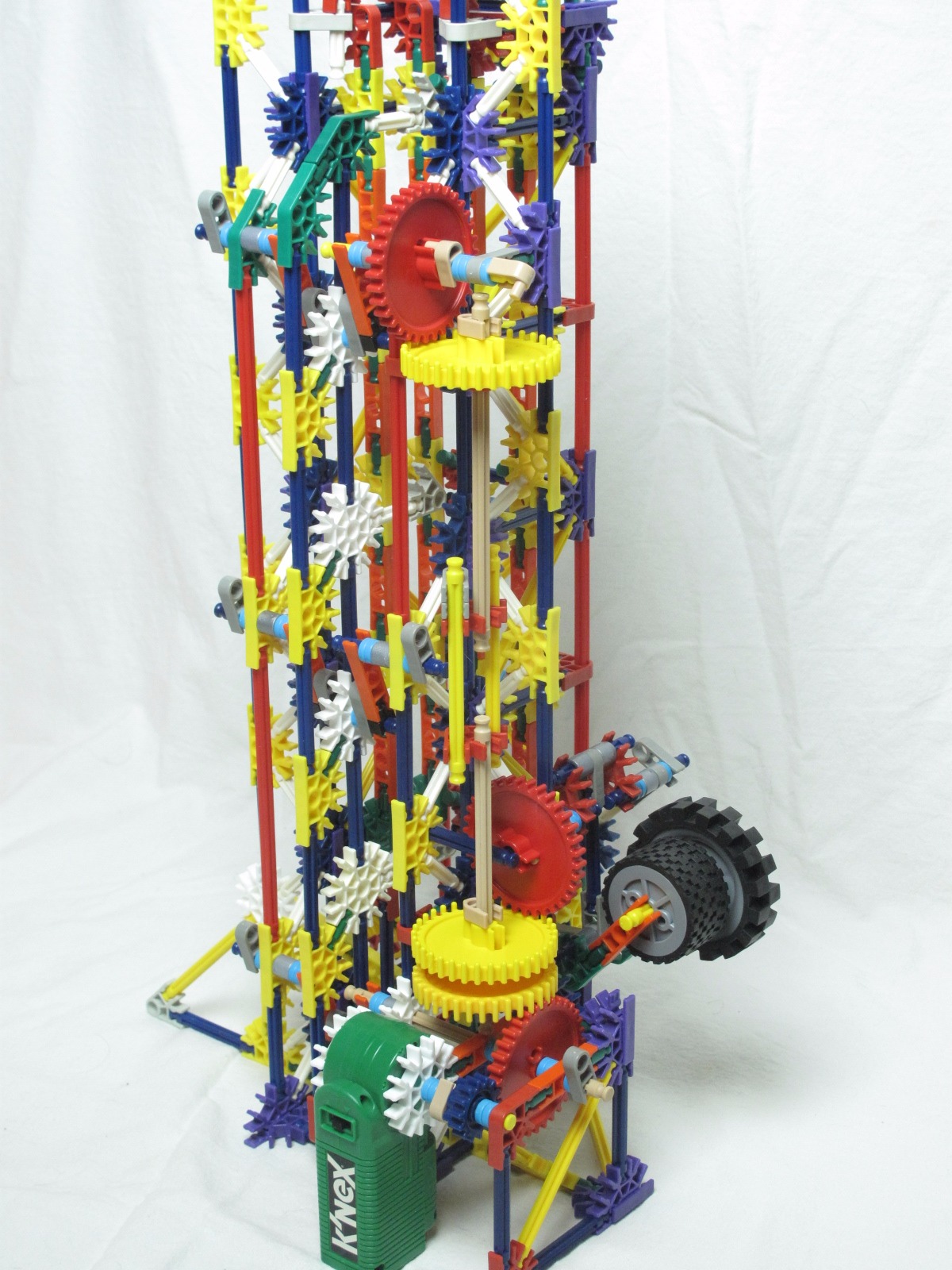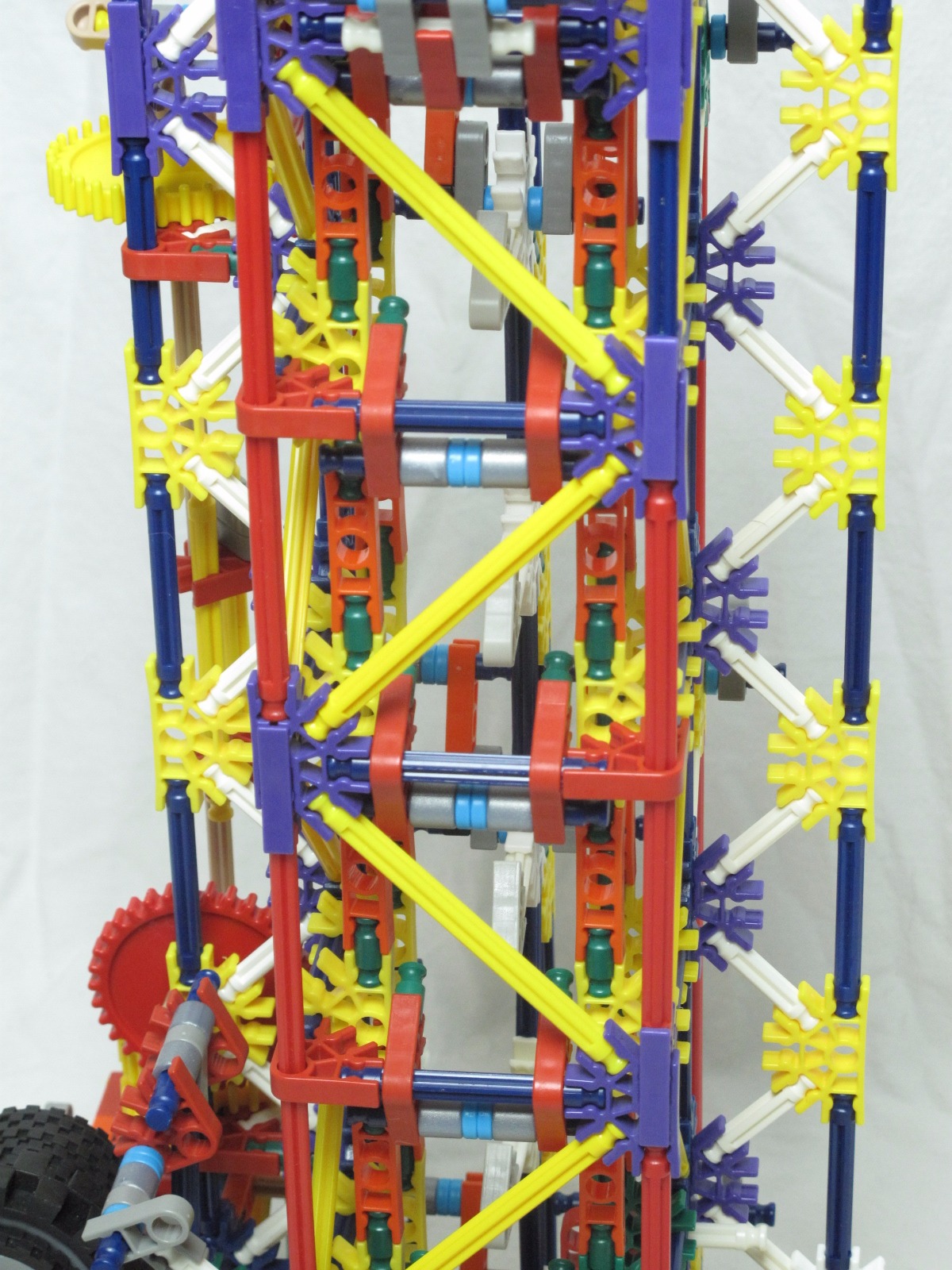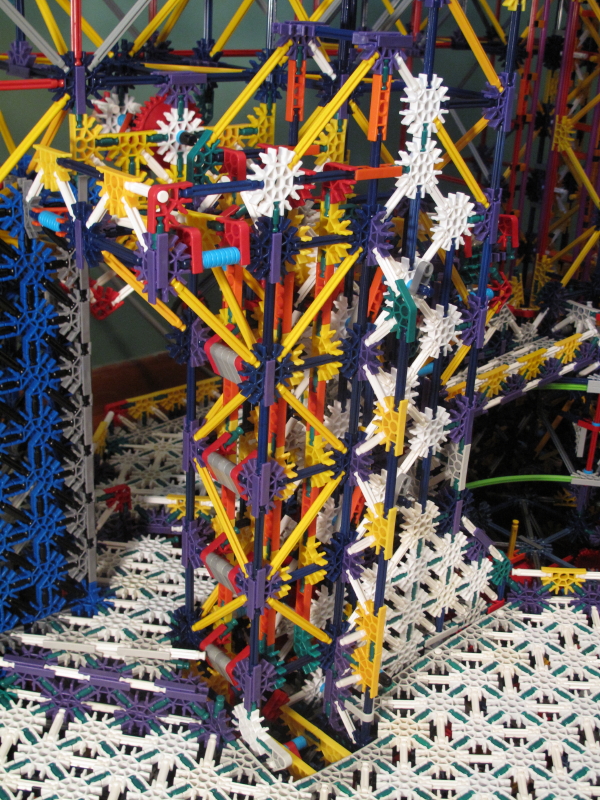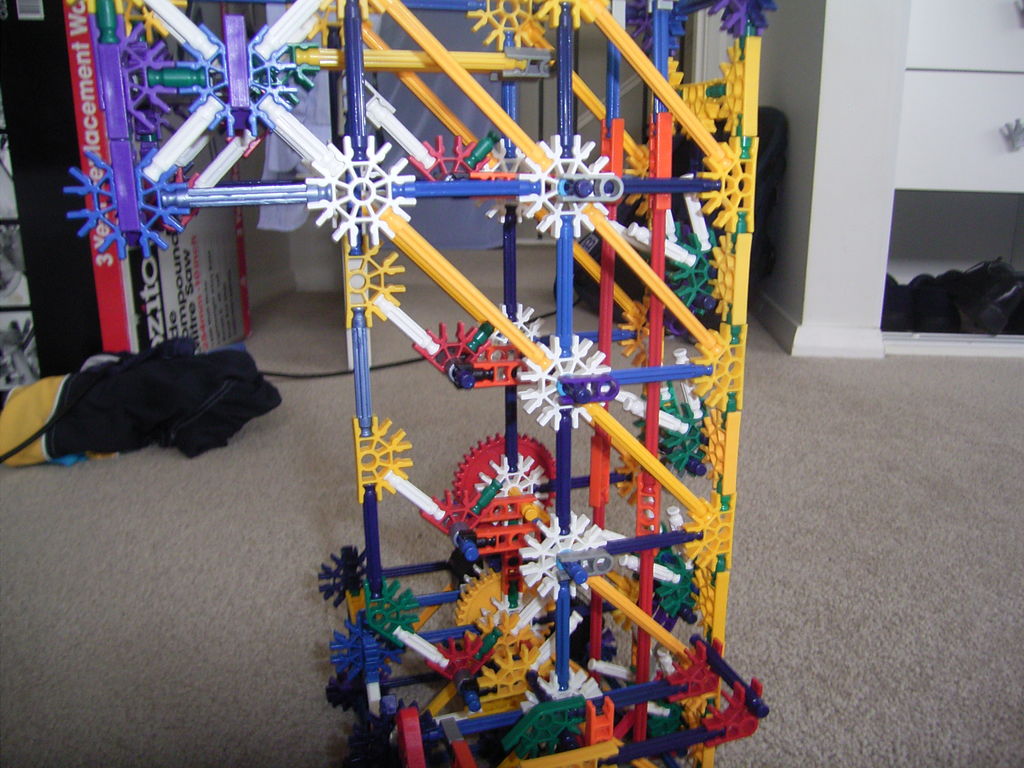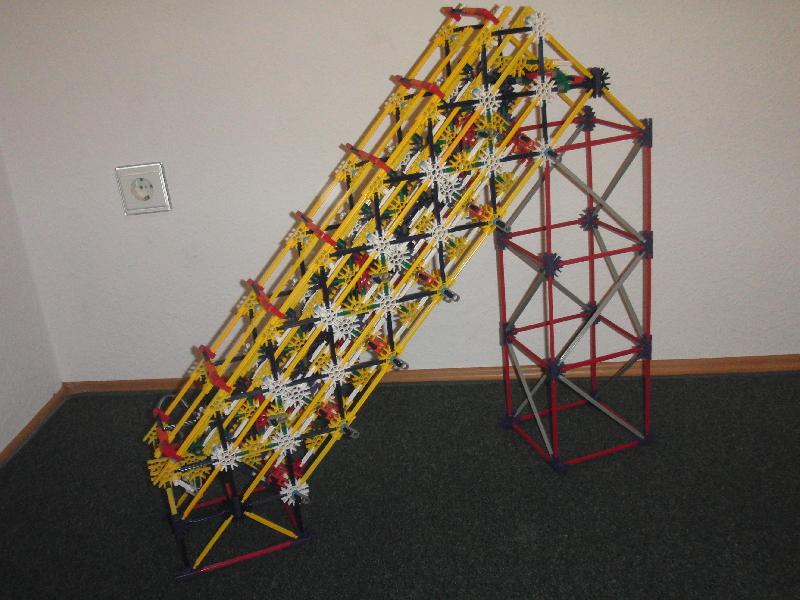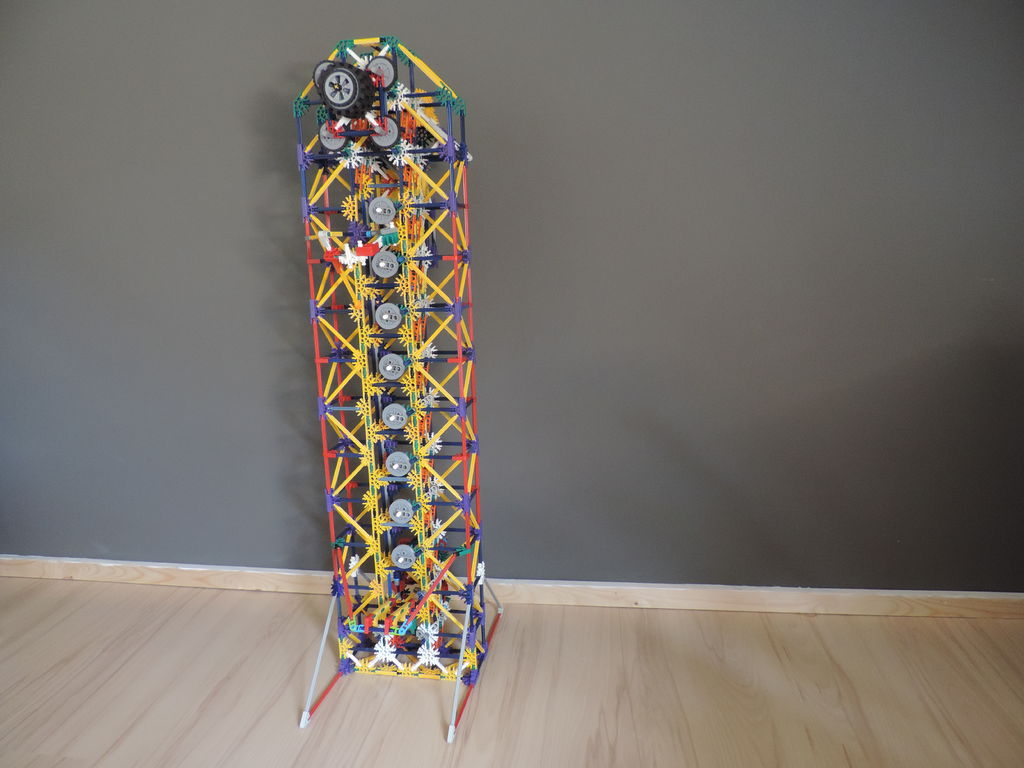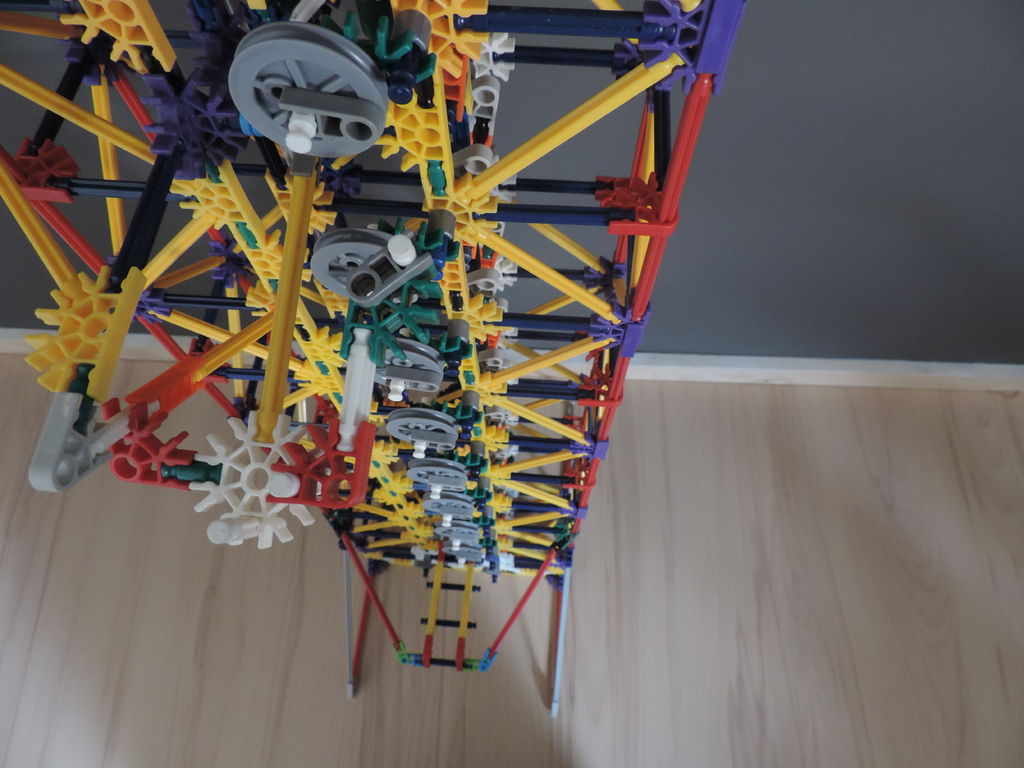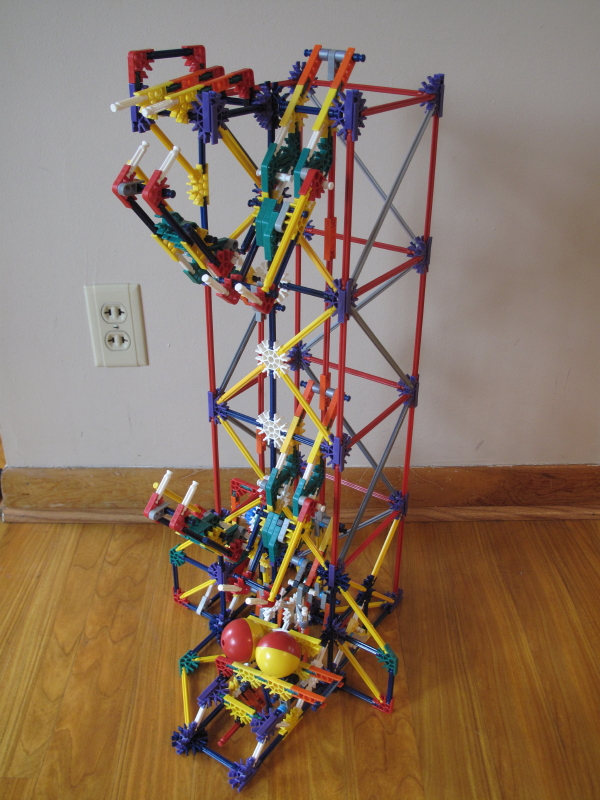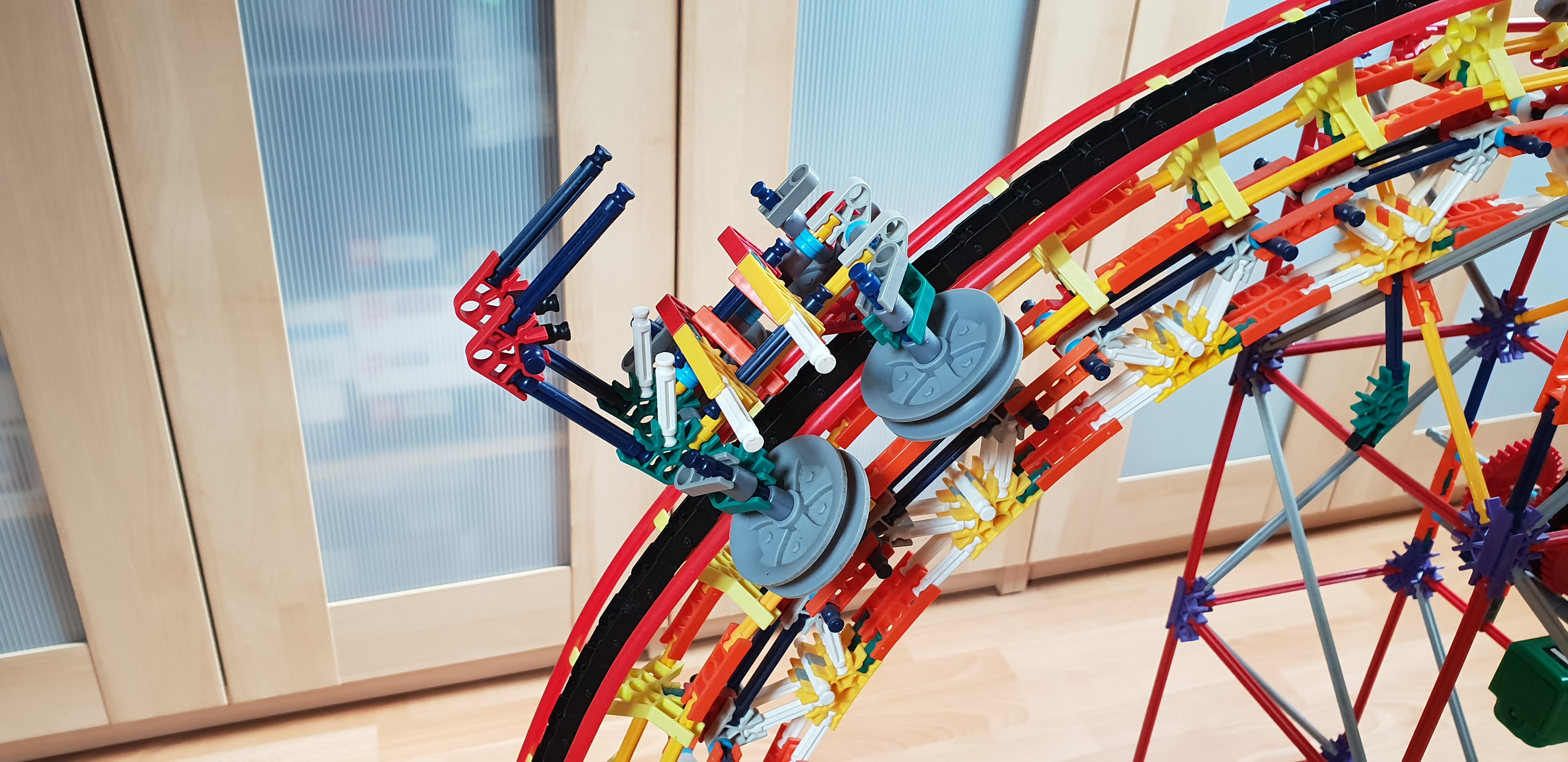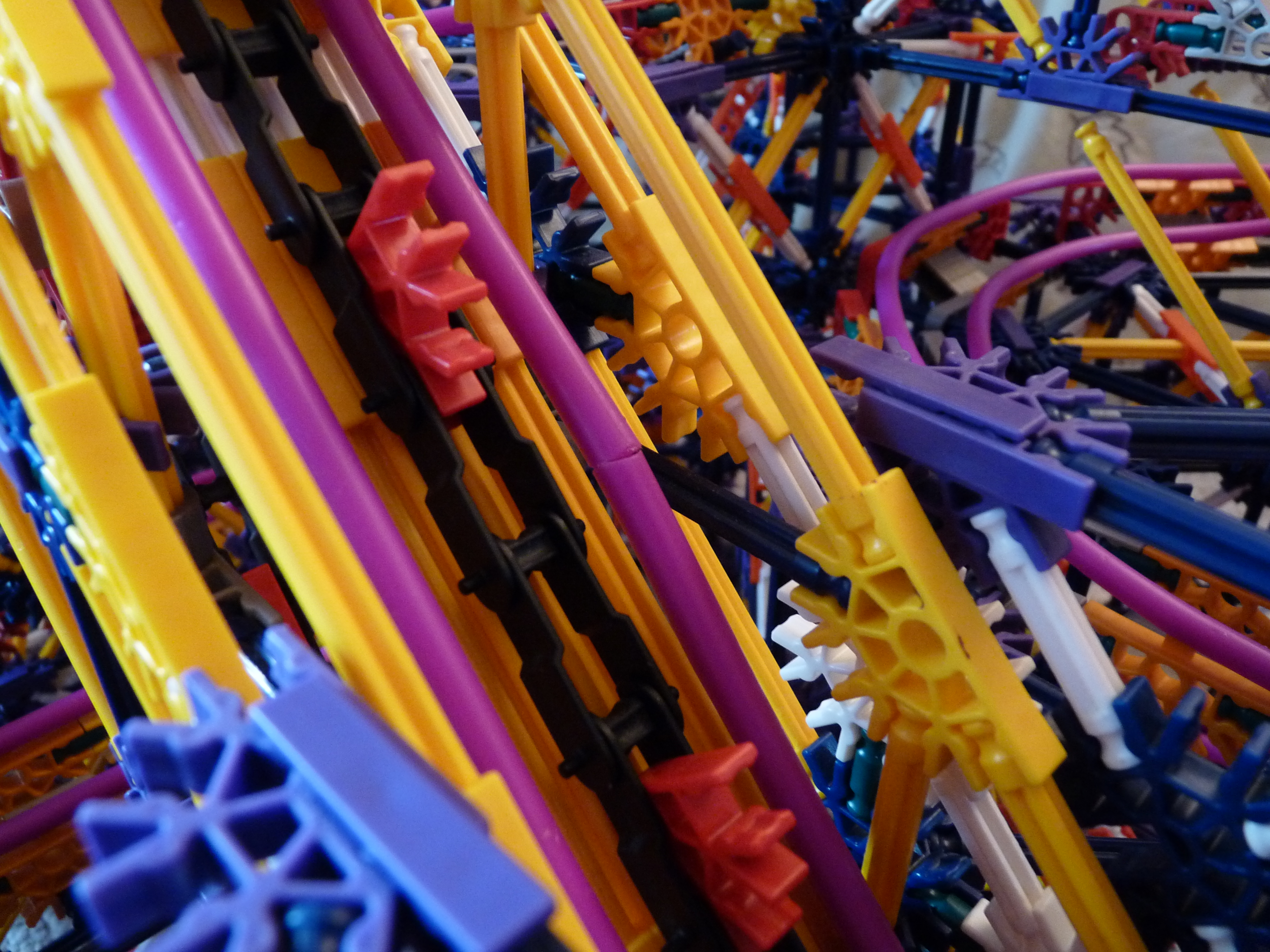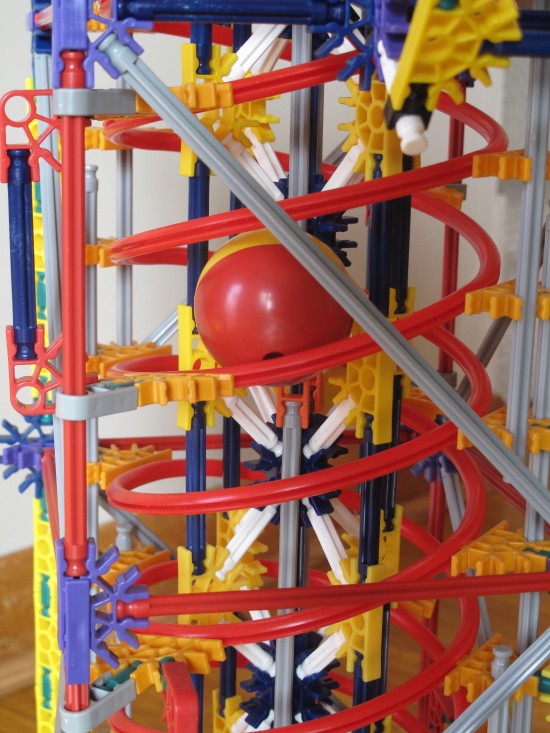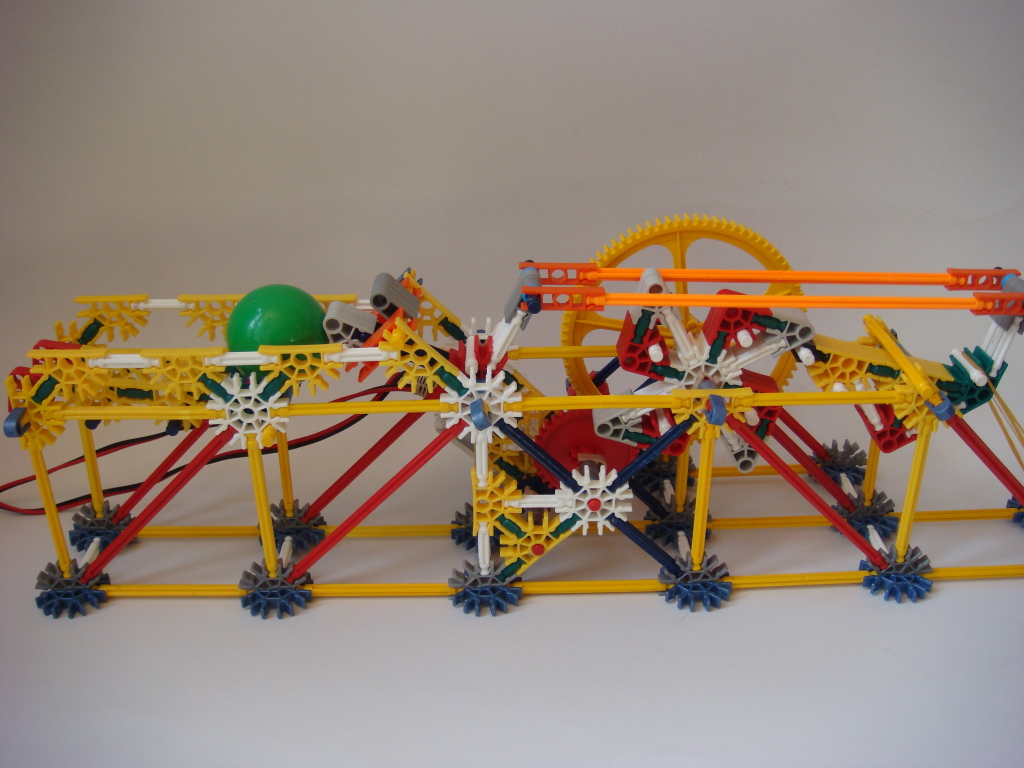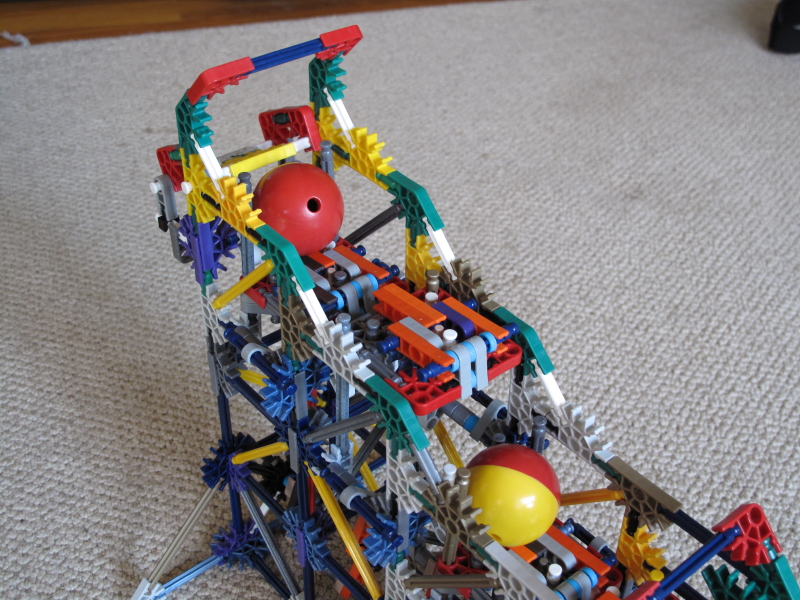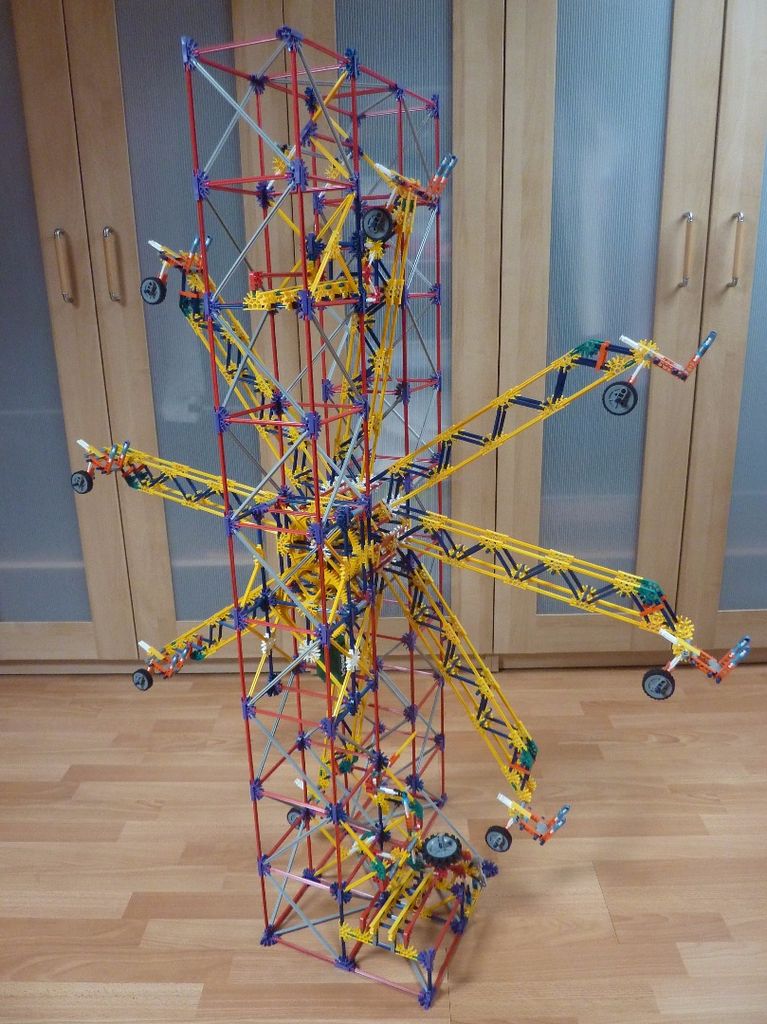Crank Lifts
With these lifts a component is connected directly to cranks, which is often thin and rotates in a circular motion to get balls from one level to the next. There are ways of getting the balls to stay in a fixed position while the cranks go back around to the next cycle.
Jigsaw Lift
- Inventor: bezempje95
- Instructions
- Video
With this lift there is a chute, tilted diagonally, which has something that resembles a jigsaw blade in the middle that goes up and down in a circular motion. Due to the “teeth” on it, the balls are advanced up a level on each crank cycle and held back by teeth on the chute. There is also a counterweight to help when everything is being lifted up a level.
TIP
When these lifts are shorter the jigsaw is connected to cranks with red gears, but you can also use shafts to connect cranks to the same motor.
Vertical Jigsaw Lift
- Inventor: Tornado96 and Shadowman39
- Featured in Citadel
- Instructions
This is much like a normal jigsaw lift, except it’s going straight up instead of diagonal, which saves space and time. The balls go up a freefall step by step with the help of small holders similar to an alternator lift. This is an example of connecting cranks with driveshafts rather than a geartrain. There is a different version made by mathsboy314.
Double Jigsaw Lift
This uses two jigsaws in the center instead of one. Putting them on double cranks means the balls are lifted twice as fast. Another benefit is it doesn’t need a counterweight, since the two jigsaws balance each other.
Ladder Lift
- Inventor: Thibault Art
- Featured in The Exception
- Instructions
- Video
This is a bit similar to jigsaw lifts, except the balls go inside of the rotating carrier instead of along the side, which is where it gets the name “Ladder Lift”. It is also different in the way the balls are stored for each rotation, inside of the tower structure itself.
